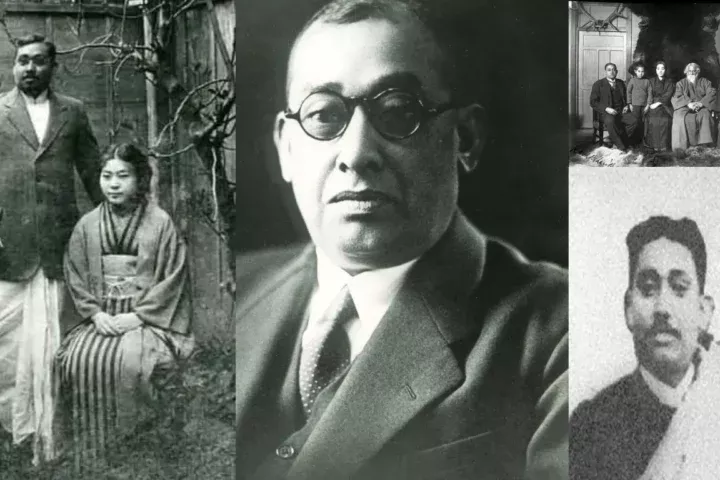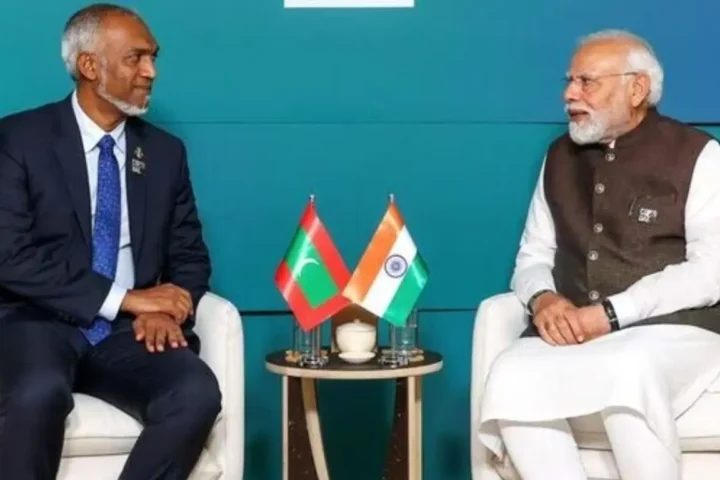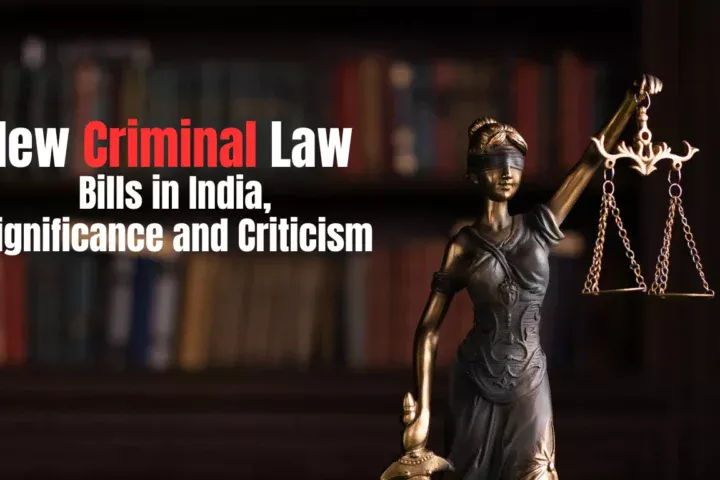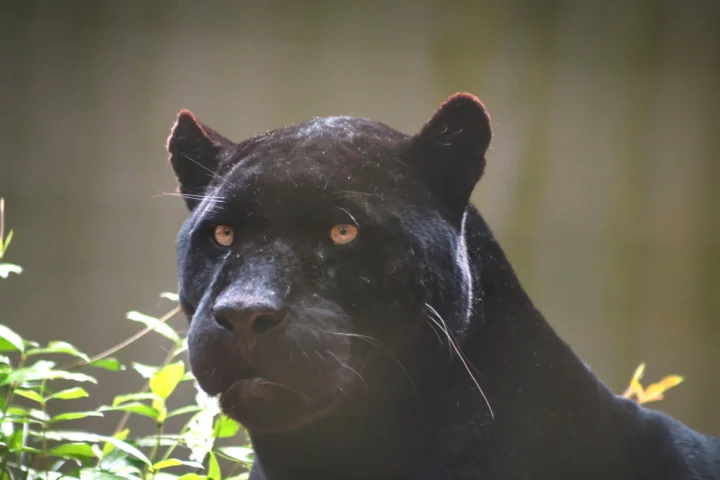Introduction: It takes courage and conviction to face facts. In science there is something known as “cause and effect “theory. It simply states that the effect that we face today, have their cause somewhere. Once the cause is identified the effect can be altered.
day 1 : April-1-2023
The G20 is being held here, to alter the effects of carbon footprints leading to climate change. The cause is the careless and insensitive development at the cost of the environment earlier. So now the world is devising ways and means for sustainable development goals (SDG).
It is the same for a society unless and until the members of a society realise, the cause of their fear of losing their identity, language, culture etc it will only add to their sense of loss. In medicine it’s called “ diagnosis” . In history it’s called analytical approach and for a society it is “introspection”- to look within before indulging in “ blame game”.
For politics, ‘blame game ‘ is a good tool, it gives good dividends through polarisation but for the society, which wants to move forward- it’s introspection then positive action. Now shifting demands and goal posts for last fifty years has yielded almost nothing. Heard one leader say,’ anything from the Indian Constitution’ it is the longest in the world. If the wearer does not know where the shoe pinches; then how would the Constitution which has 400 plus articles and 12 schedules?
My earlier article “From Demand to Development Politics” was an introspection on the partition of Tripura and how the plains of Tripura and ‘reserve areas’ were lost due to non applicability of mind and insensitivity. It’s surprising that now the cure for partition is another partition of the state. The same leader I have mentioned above, also says, ‘ We have no objection if the central government makes a state comprising of 100 villages’ ( callousness of power) now from partition to fragmentation of this state and yet claiming to be “ Bhumi Putra – son of the soil “.
Jishnu Dev Varma
This article is on language and scholars’ confusion of origin: Last night posted the introduction to this article. Introduction was necessary to put the past into the present context.
day 2 : April-2-2023
After Bir Chandra, his son Radha Kishore further reinforced Bengali as the state language. A rather interesting order was written by him, to one of his ministers’. When transcribed into English it reads as: “For a long time, Bengali has been used as the state language and various steps were taken for its development. I think this has been a matter of pride for a native Hindu kingdom neighboring Bengal. I have a special love for Bengali and I feel it’s my duty to ensure that this language is used in all matters pertaining to the state; so that it further develops as days go by.” ( Rabindranath o Tripura original edition page 22 published 1961 President, Vice president of India and Maharaja Kirit Bikram Manikya sent messages on its publication. Original text in Bengali given with this Article)
In the same letter he went on to add,” You maybe be aware that there are some employees in the state, who are educated in English; please ensure that they do not deviate from the age old cherished objective and rule.” What on earth happened to Kok Borok; the indigenous language?
The Political Agent’s report of 1875-1876 stated that Radha Kishore, was fully acquainted with Kok Borok; the language of his indigenous subjects and as the heir apparent (jubooraj); he was engaged in the compilation of its vocabulary.
A rare picture of the old Malancha Niwas where Tagore stayed as a guest of Maharaja.
The report stated, “The jubooraj has moreover at my suggestion, set about the compilation of a Tipperah vocabulary. He is perfectly acquainted with the vernacular of the hill people, and I am in hopes that the result of his undertaking will have some scientific interest”. The enthusiasm that he showed for his language in his youth somehow, lost its fervor after he came to the throne. Later on, one never heard of what came of this etymological / linguistic study of Kok Borok. Nothing was heard of it neither his successors took it foreword.
There maybe a rationale in making Bengali the State language but there was none for not developing Kok Borok (the link language among most indigenous people in Tripura). It was perhaps due to the overwhelming influence of Bengal and the appreciation that Bir Chandra got from there, Kok Borok did not get the importance it deserved.
It was certainly, a boon that cultural influences came from other states, as well as from Bengal, for they helped a remote kingdom, to obtain a broader perspective and recognition. Further, did not help in anyway to live in isolation, no matter how glorious it may have been. On the other hand one must accept the fact that the tendency for refinement did not necessarily mean that all traditional values should be thought of as excess baggage; too heavy to be carried forward. This line of thinking, allowed the winds of change to indiscriminately, “blow away the grain with the husk”. The empty spaces thus created were filled in with, borrowings from here and there.
The gentry in Tripura stood somewhat transformed by these influences; they obtained ‘refinement’ in art, culture and literature. In the hills however, there was perhaps a different story. Without any further comment, a few lines from the Administration Report for the year 1876-1877AD maybe quoted; its sole purpose was to give a very sketchy picture of what went on in those remote areas; “The Tipperahs of all clans are largely beholden to Bengali mahajans (money lenders), who combine the profession of money-lending with that of dealers of cotton, the sale of which enables the hill people to procure many things which they do not produce ordinarily themselves.”
The meaning of this remark is best left to experts, engaged in serious study of problems such as, land alienation, indebtedness etc.
With the progress of time Kok Borok gradually faded away from the Palace and a version of highly mixed or ‘jumbled up’ form of Bengali became popular, which was a result of influences that had entered .We were indeed a much ‘jumbled up’ lot! With the evaporation of Kok borok from our lives; we were left with a Bengali that was incomprehensible to those who knew the language. Our version of Bengali was interspersed with expressions and words unknown to that language. We said Halam (taken from the Persian word Salam instead of Pranam) for paying respect by bowing before the elders in a sort of a Japanese ‘kowtow’.
We used Marda (word probably coming from Urdu or Persian ‘Mard’) to mean a male, our term for sewers was ‘golan’ (I don’t know from where it came). We used the term ‘Sidrana’ to mean ugly; it actually came from the Kok borok word ‘Sidra’ that had the same meaning. A meal that was served was ‘Khalai’ it came from
Kokborok. ‘ Maikhlai meaning the same. The word used for kitchen was ‘ Gati Ghar’ it came kokborok “ Nok Ganti “ . I don’t know from where the word ‘ bejoon’ came for a curry. For the colour green we said “Hario” that came Nepali and with the strong Nepali influence in which we grew up as our maternal grandmothers ( maharanis of Birendra Kishore were from Nepal) who came with retinue of staff and relatives.
Our expressions like ‘Buk Marani’ (a woman who beats her chest) probably meant a professional mourner, who was hired to weep and beat their breasts at funerals- known as ‘Ruadalis’ elsewhere.
The other common abuse was Pisha Mara (one who needs to be beaten with a broom stick ) Sometimes even my mother used this expression on me as a form of endearment; it had something to do with being mischievous. I hadn’t the slightest clue from where our ‘lingo’ came but I seemed to belong to a speechless class of people as far as our mother tongue Kok Borok was concerned.
One of the many theory of origin went on to state. At the time of Emperor Ashoka (c 264 to 238 BC), somewhere in the area of what was now Uttarakhand; there was a kingdom by the name of “Kar-tripura”. Emperor Ashoka was supposed to have invaded and defeated this kingdom to spread his boundary unto the highlands of the Himalayas. The name of Kar-tripura” was inscribed on the famous Ashoka pillar amongst the name of other kingdoms that Ashoka had conquered.
On the other hand there was a kingdom by the name of Kirata Rajya, in the Himalayan mountain ranges of Uttarakhand; the kingdom of Tripura was called Kirata desha or Kirata Rajya in the Rajmala. It was possible that this kingdom was first known to the Indo-Aryan speakers as Kirata-Pura or city of Kirata (tribesmen)
Probably later it may have transformed to Kirati-pura, subsequently to Kar-tipura and finally to Tripura.
Apart from legends and myths the scholars were divided as to the origin of Tripura. Kailash Chandra Sinha in his version of the Rajmala said, “One branch of the Shan dynasty of Burma established a kingdom on the eastern part of Kamrup. In course of time, the youngest son of the king was defeated by the tribals and due to that he was compelled to shift his kingdom to the northern part of Cachar. “Cachar” he said, “was the place from where the ancient Tripura dynasty originated.”
Many scholars gave their views on the origin of Tripura. In his ‘A Cultural History of Assam, Vol. I’ Dr. B.K. Barua wrote, “The original home of these people was western China near the Yan-Tse-Kiang and Hwang Ho Rivers. From there they went down the course of the Brahmaputra, Chindwin and the Irrawady rivers and entered India and Burma. The swarm that came to Assam proceeded down to the great bend of the river Brahmaputra near Dhubri (a place in Assam). From there, some of them went to the south and occupied the Garo hills and the state of Hill Tiperra”
According to W.W. Hunter in ‘A Statistical Account of Bengal Vol.-VI (Reprinted in India 1973)’ said “The rulers of Tripura were Tibeto Burmese in origin” Major Fisher opined that “The Tipperas and the Cacharis are of the same origin and their customs, religion, appearance are also probably same”. Sidney Endle in his ‘The Kacharis’ (reprinted in 1975) said, “In feature and general appearance they approximate very closely to the Mongolian type, and this would seem to point to Tibet and China as the original home of the race.”
Once again the historians and linguists were in discord; Hunter remarked “the name was probably given to the country in honour of the temple at Udaipur, which still exists. This temple now ranks as the second shrine (after the fourteen gods) or sacred shrine. It was dedicated to Tripudana, the Sun God or to Tripureshwari, the mistress of the three worlds.” Mr. Browne also shared Hunter’s views on this. However some like Kailash Chandra Sinha in his book on Tripura said “They preferred to call themselves Children of the Water Goddess (Twi means Water and Phra – God/Goddess in the Tripuri language; Kok Borok).”
Some linguists went on to opine “that during a survey with elders of the state it has been noticed that they share a belief that in the ancient times three families (Tri- Three, Para – families) settled somewhere in the state. It is to these three families the Tripuri community and the name of the state owes its origin.”
There seemed to be no agreement among scholars from where the kingdom of Tripura originated or from where the kingdom got its name –Tripura. At least there was no discord amongst its people on the legend from the Mahabharata that traced the origin or on Tripur, who gave a name to this ancient land. These maybe unhistorical but certainly not unacceptable; we have accepted the name Bharat, which too comes from a legend. Probably, there was no reason now not to acknowledge the other legend that traced the origin of Tripura. As Napolean once said, “What is history, if not fables accepted?”
Now added to this confusion of origin, we were neither very sure of what language we spoke nor did we know where the people of this land were going to. It takes no research to understand the present uncertainty that prevails in Tripura and her people. Maybe with the pounding of time, we will be forced like people elsewhere to dissolve into the present majority. It was a future that many of us did not look forward to but were unable to resist. The march of time usually tramples over many hopes and aspirations.
Earlier I felt the discomfiture, while attending meetings in tribal areas, where speeches were made in Kok Borok.
With the passage of time I accepted my handicap and the cause was my lack of determination to learn kokborok. With the advent of social media had to accept abusive trolling that has made my skin thicker. But I still felt the pain of being “ speechless “ with the people with whom we shared a history of many centuries. Not being an actor, pretender or a entertainer, so no matter how hard I tried to overlook this fact by speaking in Hindi , like others as an excuse that today due to Bollywood influence, it’s understood by all. Yet looking into their eyes; I could feel their disappointment. I had broken a bond – the bondage of language (mother tongue).
It was an accepted truth , at least for me, through all the glorification of our history , the oversight of not developing kokborok haunted the present. The lapses of the past had caught up with today’s realities ; causing so much feeling of neglect and dishonour. While some like me became “lost in the con ( fusion) wordless in the mother tongue.”
THE RULERS
Mythological
1) Duryhu 2) Babhru 3) Setu 4) Aradban 5) Gandhar 6) Dharma 7) Dhrita 8)Durmat 9) Pracheta 10) Parachi 11) Parabasu 12) Parishad 13) Arijit 14) Sujit 15) PURURABA 16) Bibarna 17)Purusen 18)Meghabarna 19) Bikarna 20 )Basuman 21 )Kirti 22)Kanian 23) Pratisraba 24) Pratistha 25) Shatrujit 26) Pratardhan 27) Pramatha 28) Kalinda 29) Krama 31) Baribarh 32) Karmook 33) Kalanga 34) Bhishan 35) Bhanumitra 36) Chitrasen 37) Chitrarath 38) Chitrayudha 39) Daitya 40) TRIPUR 41) Trilochan 42) Dalshin 43) Taidakshin 44) Sudakshin 45) Taradakshin 46) Dharmadhar 47) Dharmapal 48) Sudharma 49) Tarabanga 50) Debanga 51) Narangit 52) Dharmangad 53) Rukmangad 54) Sumang
55) Nauyogaray 56) Tarajunga 57) Tarraj 58) Hemraj 59) Birraj 60) Sriraj 61) Sriman 62) Laksmitaru 63) Rupban (Tara Lakshmi) 64) Mailakshmi 65) Nageshwar 66) Yogeshwar
67) Niladhwaj 68) Basuraj 69) Dhanraj Fa 70) Muchung Fa 71) Maichong Fa 72) Chandraraj 73) Tarphalai Fa 74) Sumanta 75) Rupavanta 76) Tarham 77) Khaham 78) Katar Fa
79) Kalatar Fa 80) Chandra Fa 81) Gajeshwar 82) Birraj 83) Nagpati 84) Siksharaj 85) Devraj 86) Durasa 87) Biraraj 88) Sagar Fa 89) Malay Chandra 90) Suryaray 91) Acchangphalai 92) Charatar 93) Achang Fa 94) Bimar 95) Kumar 96) Sukumar 97) Taicharai 98) Rajeshwar
99) Maichili 100) Taichung Fa 101) Narendra 102) Indrakirti 103) Bidvan Biman) 104) Yasoraj 105) Vanga 106) Gangarai 107) Chakruray 108) Pratit 109) Marichi 110) Gagan 111) Nabaray 112) Yuyaru Fa 113) Jangi Fa 114) Devray 115) Sivrai
Maharaja Radhakishore Helped the eminent scientist Sir Jagadish Chandra Bose and sanctioned an yearly grant to Viswa Bharati. He wrote the letter that has been mentioned in this article. He built Victoria Memorial Hospital ( now IGM). Ujjayanta Palace set up Bir Chandra Library in memory of his father.
HISTORICAL RULERS
116) Dungur Fa alias Adi Dharma Fa (c.635-675 A.D.) 117) Kharung Fa (c.675-10 A.D.)
Eighth Century AD
118) Chhengphalai (c.710-745 A.D.) 119) Lalit Rai (c.745-780 A.D.) 120) Mukunda Fa (c. 780- 815)
Ninth Century
121) Kamal Rai (c. 815- 850A.D.) 122) Krishnadas (c. 850- 885 A.D.) 123) Yash Fa (c. 885-920 A.D.)
Tenth Century
124) Muchang Fa (c.920-955A.D.) 125) Sadhu Rai (c. 955-980 A.D.) 126) Pratap Rai (c.980-1010 A.D.)
Eleventh Century
127) Vishnuprasad (c. 1010 -1045AD) 128) Baneshwar (c. 1045-1075 AD) 129) Birbahu (c. 1075-1100A.D.)
Tweleveth Century
130) Samrat (c.1100-125AD) 131) Champa(c.1125-1140AD) 132) Meghraj (c.1140-1160AD) 133) Dharmadhar (c.1160- 1225AD)
Thirteenth Century
134) Chenthung Fa (c. 1225-1250AD) 135) Achong Fa (c.1250-1270 AD) 136) Khichong Fa (c.1270-1280) 137) Dangor Fa (c. 1280-1300AD)
Fourteenth Century
138) Raja Fa (c. 1300-1325AD) 139) Ratna Manikya (c. 1325-1350AD) 140) Pratap Manikya (c.1350-1375AD) 141) Mukut Manikya (c.1375-1400AD)
Fifteenth Century
142) MahaManikya(c.14001430AD) 143) Dharma Manikya(c.1431-1462AD) 144) Pratap Manikya II (c.1462- 1490) 145) Dhanya Manikya (1490-1515 AD)
Sixteenth Century
146) Dhwaja Manikya (1516-1521AD) 147) Dev Manikya(1522-1527AD) 148) Indra Manikya (1527- 1528AD) 149) Vijay Manikya (1528-1563 AD) 150) Ananta Manikya (1564-1535 AD) 151) Udai Manikya * (1566-1572AD) 152) Jai Manikya * (1573 – 1576 AD) 153) Amar Manikya (1577-1585 AD) 154) Rajdhar Manikya (1585-1599)
Seventeenth Century
155) Yashodhar Manikya (1600- 1623AD) (1623 -1624 there was no king due to Mughal occupation of Tripura) 156) Kalyan Manikya (1624 -1660AD) 157) Govinda Manikya (1660 -1661AD) 158) Chatra Manikya (1661- 1666 AD) 159) Govinda Manikya (Second reign 1667-1672AD) 160) Ramdev Manikya (1673 – 1682AD) 161)Ratna Manikya II (1682AD) 162) Narendra Manikya (1682-1684AD) 163) Ratna Manikya II (second reign 1685-1712AD)
Eighteenth Century
164) Mahendra Manikya (1712-1713 AD) 165) Dharma Manikya II (1713-1728AD) 166) Jagat Manikya (1729-1730AD) 167) Dharma Manikya I (second reign 1731-1732AD)
168) Mukunda Manikya (1733-1738 AD) 169) Jai Manikya II (1739-1742 AD) 170) Indra Manikya II (1742-1745 AD) 171) Jai Manikya II (second reign 1746 AD) 172) Vijay Manikya Il (1746-1747 AD) 173) Krishna Manikya (1748 – 1783 AD) 174) Janhabi Devi (1783-1785AD) 175) Rajdhar Manikya (1785-1804AD)
Nineteenth Century 176) Ramganga Manikya 177) Durga Manikya 178) Ramganga Manikya (second reign 1813-1826AD) 179) Kasichandra Manikya (1827-1829AD) 180) Krishna Kishore Manikya (1830-1849) 181) Ishaan Chandra Manikya (1849-1862AD) 182) Bir Chandra Manikya (1862-1896 AD)
Twentieth Century
183) Radha Kishore Manikya (1896-1909 AD) 184) Birendra Kishore Manikya (1909-1923AD) 185) Bir BikramKishore Manikya (1923-1947AD) 186) Kirt Bikram Kishore Manikya (1947-1949)
In 1949 Tripura formally merged with the Indian Union.
(* Intruders- not descendants of the Manikya Dynasty)
( continued)…………………………………………………..
Jishnu Dev Varma:
A “severely edited” excerpt from my unpublished book “ Master of Time” . Hope to publish the book soon ,
PS :- On some idle Sundays, I may come out with articles . The Bengali version will come once my translator Kartick has done it. Trolls, abuses criticisms, appreciation, etc all welcome.
(The author is the Ex Deputy Chief Minister of Tripura. The views expressed here are his his own and personal and not in anyway associated with any political party or organisation . )
writer :
Jishnu Dev Varma









